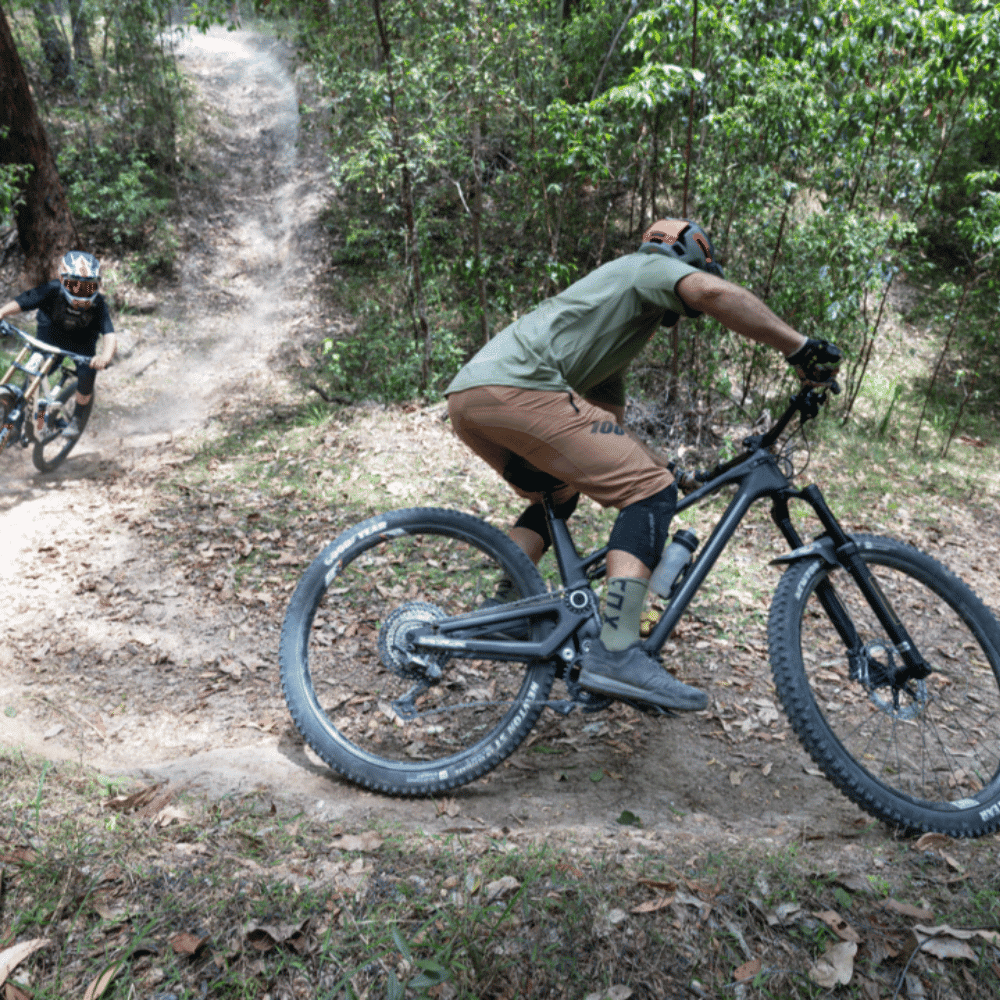1. Nature Walks and Bike Rides
Take your kids on nature walks or bike rides through local parks, trails, or nature reserves. Encourage them to observe the wildlife, listen to the sounds of the forest, and breathe in the fresh air. These simple outings can spark a sense of wonder and appreciation for the natural world. If you’re getting serious about this, why not try a day trip to your nearest bike park like Boomers at Mudgeeraba on the Gold Coast.
2. Picnics in the Park
Pack a picnic basket filled with delicious snacks and head to your nearest park or green space. Let your kids run barefoot on the grass, climb trees, and play outdoor games. Picnics provide an opportunity for relaxation and connection with nature while enjoying quality family time.
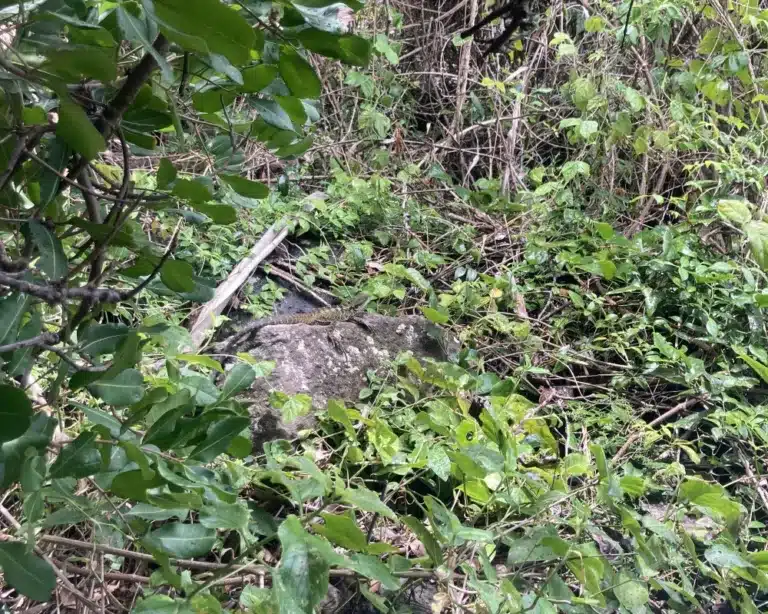
Photograph of bearded dragon taken by 5-year-old while on walk.
3. Taking Photographs
Give your children a camera or smartphone and encourage them to capture the beauty of nature through their own lens. Photography not only allows them to document their outdoor adventures but also encourages observation and creativity.
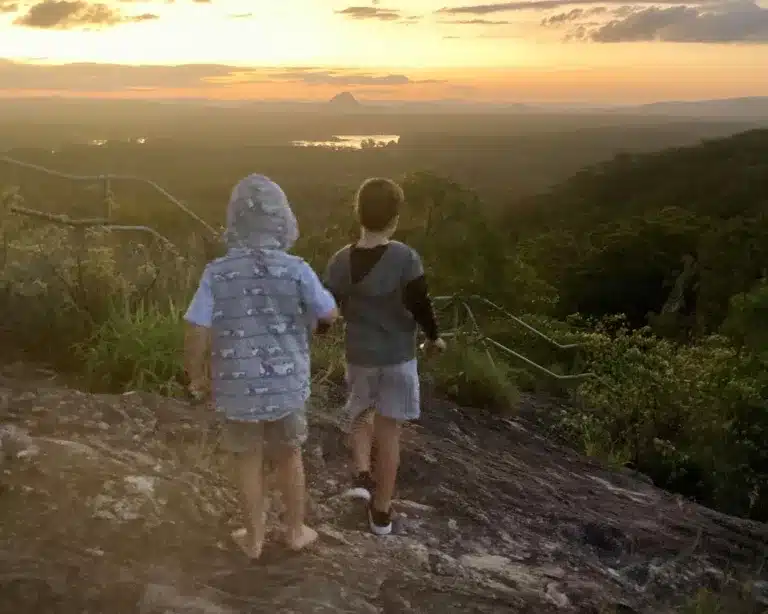
View from Mt Tinbeerwah
4. Seek Out Natural, Untouched Spaces
Explore natural, untouched spaces such as suburban fields, forest edges, or hidden ravines. These areas are often teeming with wildlife and offer endless opportunities for discovery and exploration. Returning to the same spot throughout the seasons allows for observations of change and the cycles of life. Perhaps the ancient rainforests of Gondwana, the dunes and wrecks of Moreton, or WA’s first ever tourist attraction the captivating Ngilgi Caves.
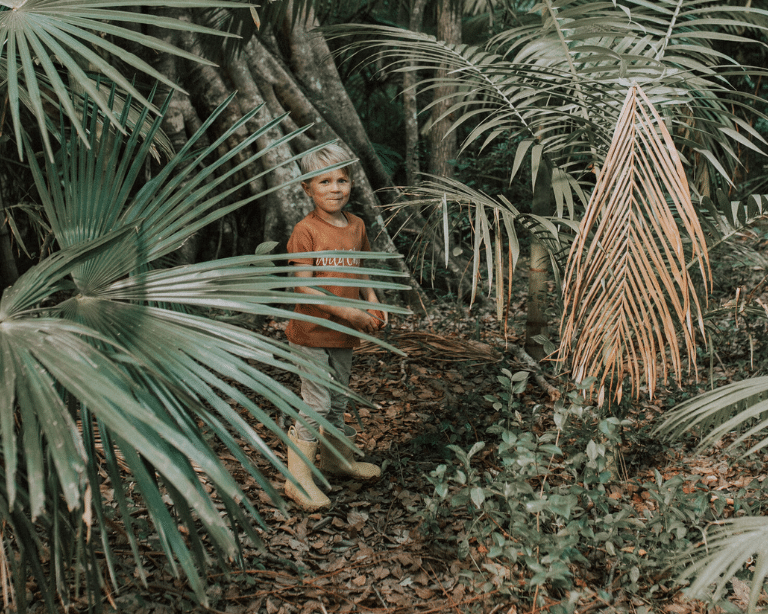
The Wildlings Forest School
5. Make Time for Unstructured Outdoor Play
Encourage unstructured outdoor play where children are free to roam, imagine, and create in natural environments. Whether it’s building forts, climbing trees, or splashing in puddles, unstructured play fosters independence, creativity, and a deep connection to nature. If you’re not confident or comfortable with this, you can try one of the forest schools like The Wildlings Forest School who support nature-based learning experiences.
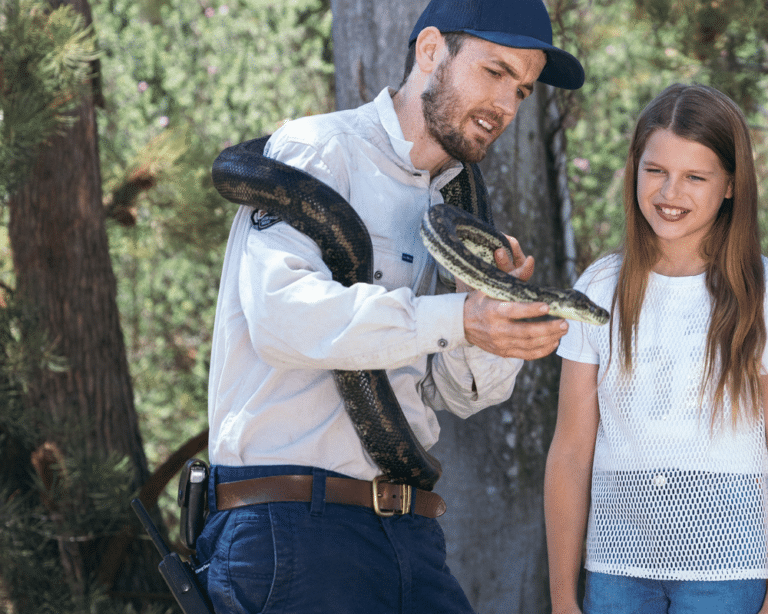
Save a Mate Ranger for a Day
6. Stop Thinking About Nature Time as Leisure Time
Shift your mindset and prioritize time in nature as essential for your child’s development rather than just leisure time. Recognize the value of outdoor experiences in promoting physical, mental, and emotional well-being. Not sure where to start? Discover more than 50 family friendly outdoor adventure experiences.

7. Read About Nature Together
Explore the wonders of nature through books, magazines, or online resources. Reading about animals, plants, and ecosystems can inspire curiosity and ignite a passion for the natural world in your children. We love ‘Weird Wild Amazing!‘ by Professor Tim Flannery for its fun and engaging format for children.
8. Get Involved in Community Activities
Participate in community activities such as planting days, nature clean-up events, or wildlife conservation projects. Many of the zoos, aquariums and sanctuaries have programs and events that general public can be involved in like Currumbin Wildlife Hospital. Getting involved not only benefits the environment but also provides hands-on learning experiences for your children and instills a sense of environmental stewardship.
9. Create a Nature Journal
Encourage your children to keep a nature journal where they can record their observations, sketches, and reflections from outdoor adventures. A nature journal is a valuable tool for developing observation skills, fostering curiosity, and deepening their connection to the natural world.
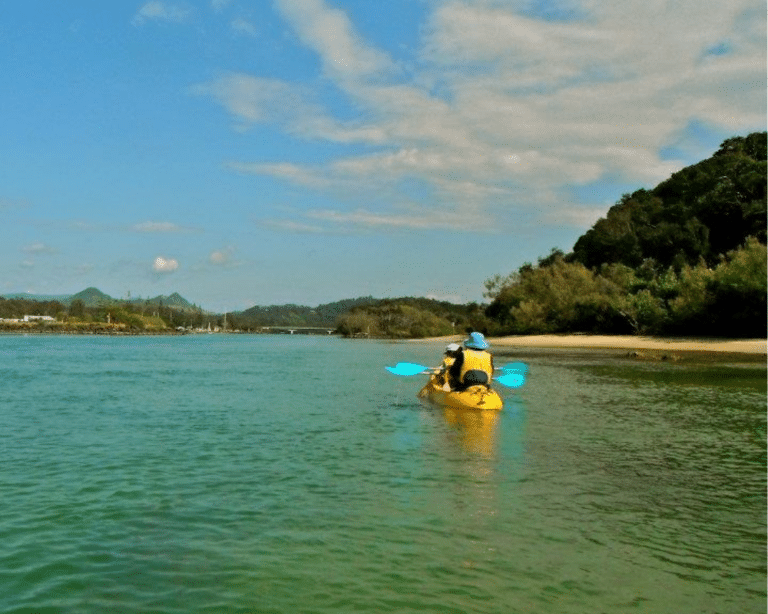
Brunswick Nature Tour
10. Share the Wonders of Nature
Above all, share your own love and appreciation for nature with your children. Take the time to explore, discover, and marvel at the beauty of the world around you together. By nurturing their connection to nature from a young age, you’re empowering them to become future stewards of the Earth.
Reflecting on the importance of preserving our natural world, it’s essential to acknowledge the species that have been lost forever. Over the past 230 years since Europeans colonized Australia, exactly 100 plant and animal species have become extinct. (Australian Geographic) These include iconic creatures such as the thylacine, pig-footed bandicoot, paradise parrot, and the Christmas Island forest skink. Their loss serves as a poignant reminder of the fragility of our ecosystems and the urgent need for conservation efforts.
In addition to extinct species, many plants and animals are currently facing the threat of extinction. Among them are the koala, Tasmanian devil, Leadbeater’s possum, and the orange-bellied parrot. These species are at risk due to habitat loss, climate change, pollution, and human activities. By raising awareness and taking action to protect these endangered species, we can contribute to preserving biodiversity and ensuring a sustainable future for generations to come.
Let’s inspire our children’s appreciation for nature and cultivate a generation that values and protects the world around them. By integrating nature into our lives and encouraging outdoor exploration, we’re fostering a love for the environment that will endure for generations to come. So, let’s lace up our hiking boots, grab our binoculars, and embark on a journey of discovery and wonder in the great outdoors!
Discover outdoor adventures or wildlife encounters for the family.
Ready to add a splash of colour to your inbox? SIGN UP here and unlock 10% OFF your first booking. You’ll receive weekly inspo, exclusive offers and be the first to know about things to do, party experiences, giveaways, and special events for your kids + family. 


